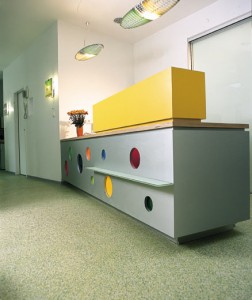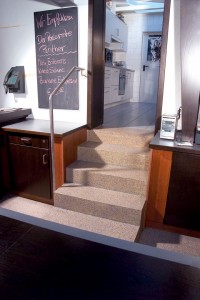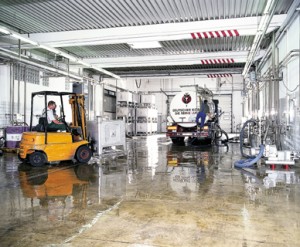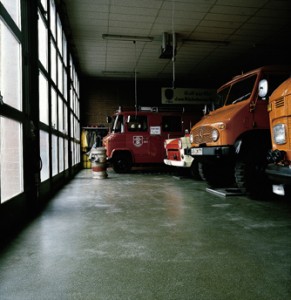Archive for January, 2012
Floor Resources: Where To Start?
Floor Resources Simplified for The Definitive Decision
Floor resources cover a plethora of items. For instance, one might not consider carpeting a floor resource, but it is. Carpeting can run the gamut from indoor-outdoor carpeting that is tightly woven and has a backing usually. The first indoor/outdoor carpeting was actually Astroturf. It was first introduced at the Astrodome, hence its name. People marveled at the new invention, and soon it was everywhere in its bright green fake turf color. Eventually it wore down and it was never very comfortable on bare feet either. Floor resources do not utilize much Astroturf any more. From there though came the real indoor/outdoor carpeting. The texture is soft on bare feet, and it can be laid just about anywhere. What makes up indoor/outdoor carpeting today is actually thermoplastic resin that is known as Olefin.
Depending on the backing that your indoor/outdoor carpet has, you may be able to clean it after it gets soiled, but keep in mind that it can get a case of mold or mildew. The only solution that will eliminate this pest is to utilize some light bleach, but you will have to truly make sure that it will not harm the carpeting and that all the bleach is removed. Keep in mind however that this remedy is only recommended for very small amounts of perceived mold; moderate (larger than a hand print) to large amounts will require an expert for remediation as mold can be extremely harmful to humans.
Other floor resources may be 3/4″ solid wood floors. What’s interesting about those of course, is that they can be finished according to your decorator’s choices. When choosing these, you will take delivery on different lengths, but the wood will have four-sided tongue and groove and you will also receive end match pieces. Pre-finished hardwood will arrive with beveled edges and of course will feature the stain color of your choice. All that’s needed then is for the floor to be laid by a carpenter. Floors that are made of hardwood are incredibly beautiful, but unlike care free flooring, infinite care must be taken to not damage it in any way, and should there be spills on hardwood, it may go all the way to the subfloor. This could on occasion cause warping of the wood, growths of mildew or mold beneath the wood, and eventually there may be some very noxious odors emanating from the wood floor.
No matter how special your place of business is, the best floor resources you can utilize is Silikal. First of all it is a completely sealed flooring. It will never admit any intrusion of dirty water or anything else below it, thus you will never ever have mildew or mold beneath the floor’s surface. No strange odors will ever escape from underneath either, as the underneath portion of Silikal is hermetically sealed.
Concrete Floor Strength: Does Your Floor Have It?
Concrete Floor Strength & What it Means
Sometimes over heard is the phrase “hard as concrete,” but is concrete truly hard? Even the Romans knew about concrete and used it extensively to construct many of the buildings that are still standing today, and all this without the rebars (steel reinforcement bars) that we use today to give a concrete floor strength. It appears that concrete went through many changes in history, meaning that humans learned that certain additives changed the strength of concrete. For instance, adding horse hair to it made it least likely to crack while the addition of volcanic ash actually enabled concrete to harden while under water! Did you know that adding blood to concrete will make it much more frost resistant? The Romans added blood to many items in history, as their sports frequently had blood involved in them as we all know.
Today scientists toss around various words having to do with concrete such as their cemetitious and aggregate phases, but at least today we have the “recipes” for many different kinds of concrete and have learned that rebars are essential to hold concrete together. Thus we have learned to make concrete with a strong bond enough to utilize it to make skyscrapers, all out of concrete and steel.
When speaking of concrete floor strength though, we do not always have the additional strength that rebars give us, and concrete is not really that hard. For instance it can conservatively be said that the majority of concrete is as a rule rated for 4000 psi (Pounds per Square Inch). Thus the concrete floor strength is often aided by having something on top of the concrete to make it stronger.
Enter a product called Silikal. Silikal is actually a concrete floor strength-giver. It essentially protects the concrete flooring so that nothing can damage it. Looking at, for instance, a garage whereby cars drive on the concrete that is already on their floor, one would think that the weight of the cars, the traction from its tires would damage the concrete floor. One would be correct, and this is why many garages use Silikal to protect their concrete floors.
One of the most punishing pieces of equipment one can put onto concrete is a forklift. However, forklifts are absolutely essential to any pallet-racking warehouse. On the other hand, not only does the weight of a forklift account for damage to the floors, but also the fact that parked forklifts are known to leak a number of damaging liquids, such as battery acid, and hydraulic fluids, as well as oil. All of these factors play an important part in reducing concrete floor strength, yet Silikal will not allow any of these things to diminish the strength of concrete.




